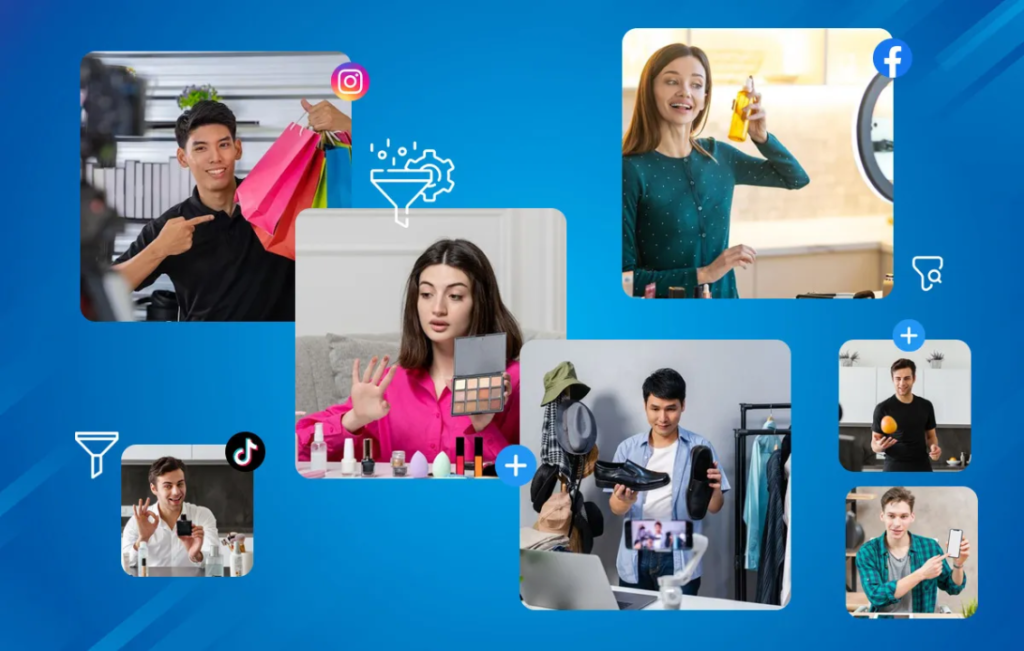Micro vs. Macro Influencers: Which is Better for Your Campaign?
Home About Us Services Social Media Consultation Branding Art Direction Social Media Strategy Community Management Content Creation Photography Videography Graphic Designs Illustration 2D Animation 3D Animation Web Design & Development Search Engine Optimization CPC Google Advertising Meta Advertising E-Mail Marketing Influencers Marketing’s Studio Work Blog Home About Us Services Social Media Consultation Branding Art Direction Social Media Strategy Community Management Content Creation Photography Videography Graphic Designs Illustration 2D Animation 3D Animation Web Design & Development Search Engine Optimization CPC Google Advertising Meta Advertising E-Mail Marketing Influencers Marketing’s Studio Work Blog Get A Qoute Micro vs. Macro Influencers: Which is Better for Your Campaign? Digital strategies now rely heavily on influencer marketing, but the effectiveness of your campaign can be greatly impacted by the type of influencer you choose, whether it be micro or macro. To assist you in selecting the option that best suits your objectives, let’s examine the distinctions. What Are Micro and Macro Influencers? Micro-Influencers: These are people who have 1,000–100,000 followers and who specialize in particular subjects, such as cuisine or fitness. Their listeners are very interested and believe what they have to say. Macro-Influencers: Those with 100,000 to more than a million followers are frequently well-known celebrities or seasoned content producers with polished and widely appealing material. Benefits of Micro-Influencers Increased Engagement Rates: They have more engagement since their smaller, more involved audiences trust their advice. Niche: Niche targeting is the best way to provide customized messages to particular audience segments. Cost-Effectiveness: Collaborations with numerous influencers are made possible by reasonably priced partnerships. Authenticity: Audiences tend to find them more relatable. Benefits of Macro-Influencers Greater Reach: Their sizable fan following has the potential to greatly increase brand recognition Professionalism: Skilled in producing powerful, high-quality content Brand Association: Credibility is increased by collaborating with well-known influencers Cross-Platform Impact: Being active across several platforms broadens your audience. Choosing the Right Fit Budget: While micro-influencers are more affordable, macro-influencers charge more Goals: Macro-influencers are excellent at raising general awareness, whereas micro-influencers are excellent at engaging a niche Target Audience: Think about your intended audience and the content they prefer Metrics: Monitor KPIs like conversions and engagement to gauge success. Combining Both The advantages of both are combined in a hybrid strategy: macro-influencers increase reach, while micro-influencers stimulate niche involvement. Usually, this equilibrium yields the finest outcomes. Final Thoughts Choosing between micro and macro influences relies on your aims. By identifying their capabilities, you can develop a strategy that matches with your aims and maximizes ROI. The correct influencer can make all the difference, whether your goal is broad recognition or specialized engagement. Do you need advice for your upcoming campaign? Bold Media is here to help. Contact us today to establish a winning influencer marketing strategy! Come Work With Bold Media Collaborating can bring a fresh perspective, expertise in the latest marketing strategies, and efficient execution to your marketing efforts, ultimately helping your business reach its goals and succeed in the digital world. Come join us! Get Your Free Custom Proposal Your audience is on social media. You should be too. Bold Media Join the family! Email Address Subscribe You have been successfully Subscribed! Ops! Something went wrong, please try again. Business Centre, Sharjah Publishing City, Sharjah, United Arab Emirates Work@boldmedia.ae +971 504039664 Home About Us Services Careers Studio Work Blog Home About Us Services Careers Studio Work Blog Linkedin Whatsapp Facebook Instagram Copyright © 2024 boldmedia.ae | Powered by BOLD FZE LLC
Micro vs. Macro Influencers: Which is Better for Your Campaign? Read More »









